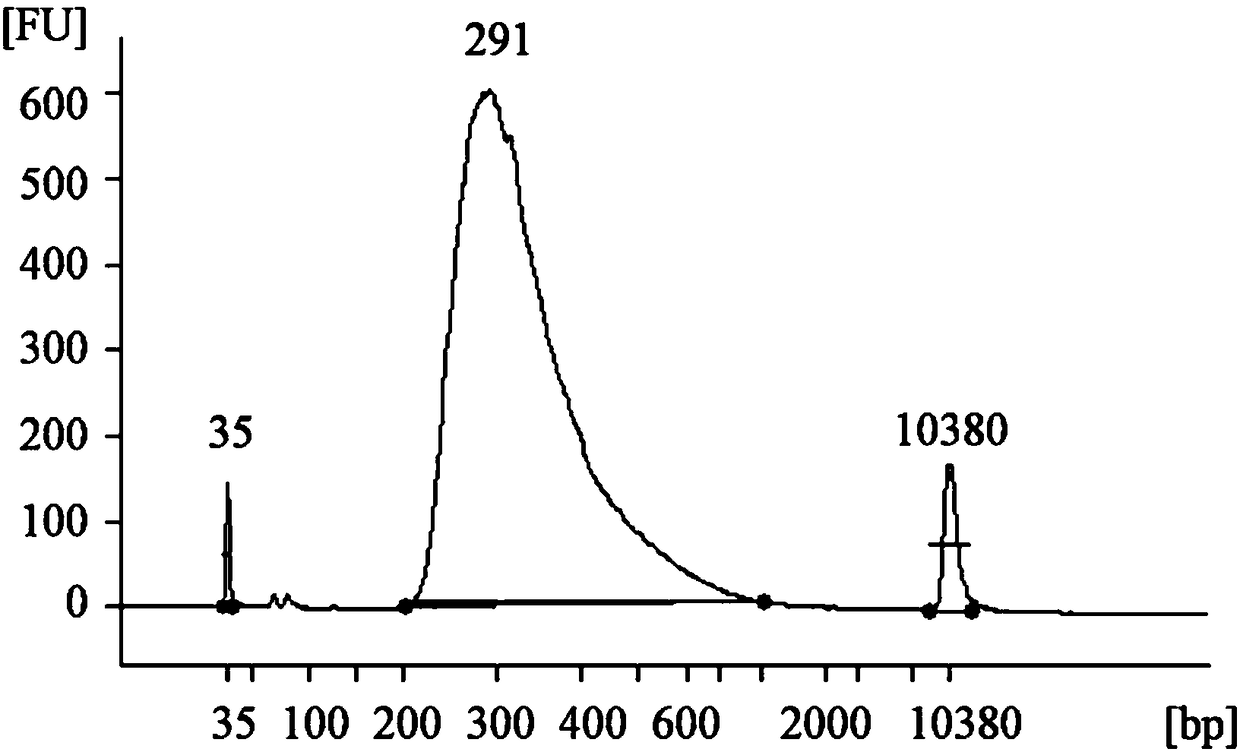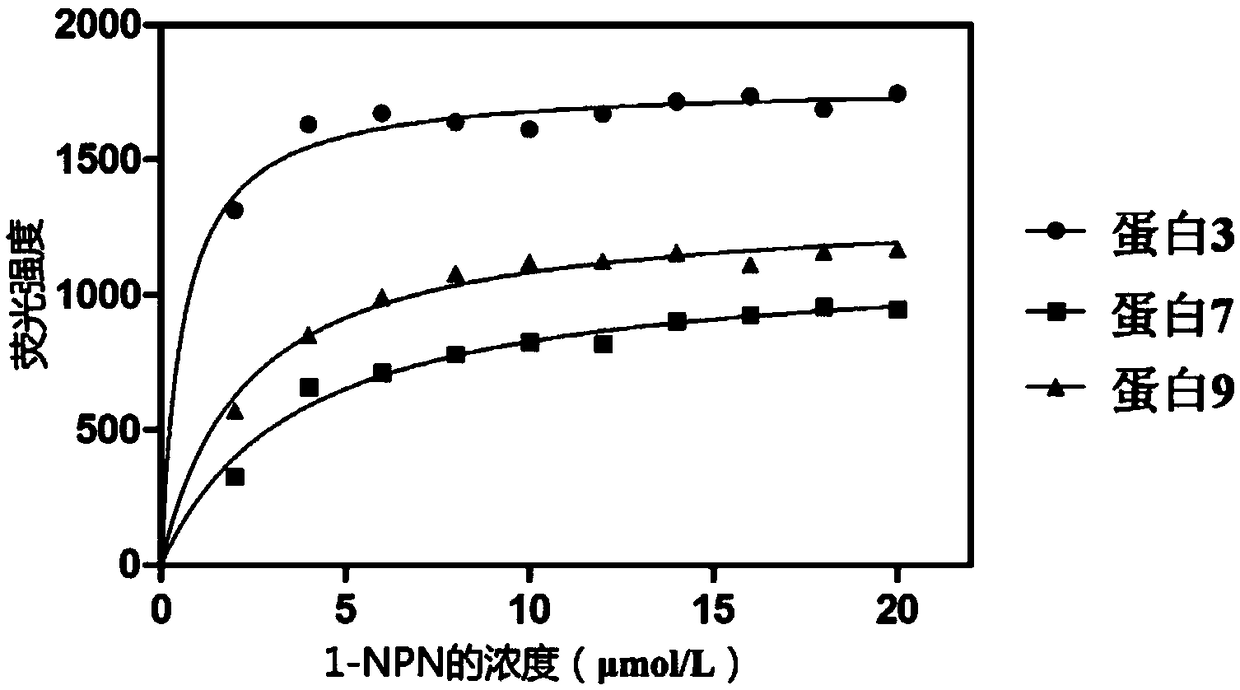Odorant-binding protein of Myzus persicae and application of odorant-binding protein
A technology of odor and protein, applied in peach aphid odor binding protein and its application field, can solve problems such as difficult to effectively use natural enemy insects to biologically control peach aphid, environmental pollution, etc.
- Summary
- Abstract
- Description
- Claims
- Application Information
AI Technical Summary
Problems solved by technology
Method used
Image
Examples
Embodiment 1
[0036] Construction of cDNA library
[0037] 1.1 RNA extraction, reverse transcription synthesis of first-strand cDNA and ds cDNA
[0038] Get about 2000 peach aphid adult antennae, head, foot and body, utilize Trizol method to extract RNA respectively to this four parts, and electrophoresis detects RNA quality (see figure 1 ), and the concentrations of RNA determined by spectrophotometer were 172.5ng / μl, 244.9ng / μl, 145.6ng / μl, and 2021.8ng / μl, respectively. mRNA was separated from total RNA using oligo(dT) magnetic beads and fragmented by incubation at 94°C for 5 minutes. Then, using six random bases as random primers, respectively, the RNAs obtained from the antennae, head, foot and body were subjected to the action of M-MuLV Reverse Transcriptase to synthesize the first-strand cDNA, respectively, and then use The first-strand cDNA of each part was used as a template, and dNTPs, DNA polymerase I and RNase H were added to rapidly synthesize the second-strand cDNA to obtain...
Embodiment 2
[0053] Cloning, expression and purification of proteins
[0054] 2.1 Obtaining target genes and proteins from cDNA libraries
[0055] The constructed cDNA library of antennae, head, foot and body was sent to Beijing Thermo Lily Biotechnology Co., Ltd. for sequencing.
[0056] For the original sequencing sequences (Sequenced Reads or raw reads) obtained by sequencing, which contain low-quality reads with adapters, in order to ensure the quality of information analysis, the raw reads are filtered to obtain clean reads. The clean reads were assembled using Trinity software to generate unigenes. After assembly, all unigenes were BLASTx and BLASTn aligned in NCBI databases nr and nt, and those with E-value < 1.0×10-5 were retained. A total of 110,059,204 raw reads were obtained in this application. After removing linker sequences and low-quality sequences, 107,199,360 clean reads were obtained. After assembly, 50,352 unigenes were generated, ranging in length from 201bp to 27.17k...
Embodiment 3
[0091] Fluorescence competition experiment
[0092] The principle of the fluorescence competition binding experiment is: after the fluorescent probe is combined with the odorant binding protein, it will emit fluorescence under the action of excitation light. At this time, a fluorescence value will be detected when the machine is used for detection. When the odorant compound is added, if the odorant compound Combined with protein, the odor compound will compete with the fluorescent probe, and the odor compound will bind to the protein. At this time, the detected fluorescence value will decrease. As the amount of the added odor compound increases, the fluorescence value will gradually decrease.
[0093] Carried out on F-380 fluorescence spectrophotometer (Tianjin Gangdong), the container used is a quartz cup with a width of 1 cm, a slit width of 10 nm, and a sensitivity of 2. In addition to the above-mentioned purified protein 3, protein 7 and protein 9, the reagents used also i...
PUM
 Login to View More
Login to View More Abstract
Description
Claims
Application Information
 Login to View More
Login to View More - R&D
- Intellectual Property
- Life Sciences
- Materials
- Tech Scout
- Unparalleled Data Quality
- Higher Quality Content
- 60% Fewer Hallucinations
Browse by: Latest US Patents, China's latest patents, Technical Efficacy Thesaurus, Application Domain, Technology Topic, Popular Technical Reports.
© 2025 PatSnap. All rights reserved.Legal|Privacy policy|Modern Slavery Act Transparency Statement|Sitemap|About US| Contact US: help@patsnap.com



